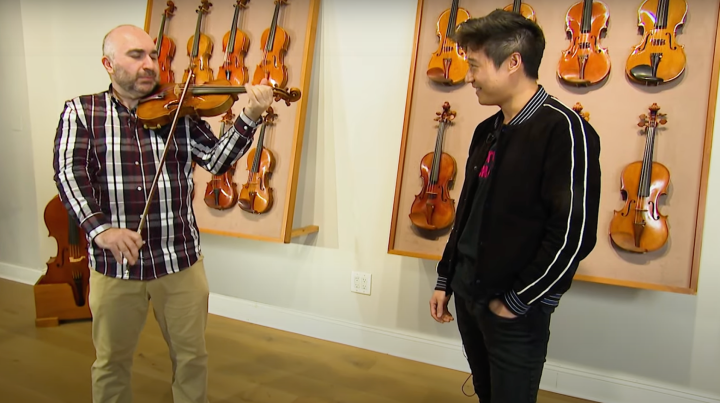
Why a Guarneri violin is expected to fetch $10 million at auction
Why a Guarneri violin is expected to fetch $10 million at auction

A rare violin is expected to fetch $10 million or more when it goes up for auction in mid-March, as demand from collectors intensifies, and tight supply keeps prices for certain instruments stratospherically high.
The instrument was made in 1731 by Giuseppe Guarneri “del Gesù,” who is considered one of the best violin makers of all time. The other is a name that is more familiar to classical music audiences: Antonio Stradivari. Both worked around the same time period, in the same small town in Italy — Cremona.
Stradivarius and Guarneri violins have been greatly appreciating in price in recent years, as more wealthy collectors take interest in them.
“And especially in the last 20, 30 years, we’ve seen how [rare violins] have become an alternative asset for many people. So, the prices are going fast and going high, they’re appreciating a lot,” said Carlos Tomé, the Director and Head of Sales at Tarisio, the New York-based international auction house of rare stringed instruments and bows, which plans to conduct the online auction over a 24-hour period.
Anticipating interest from around the world, Tarisio has been showcasing the violin in parts of the U.S., Europe and Asia.
The instrument, known as the ‘Baltic’ Guarneri — instruments of the two great violin makers are often individually named based on who possessed them in the past — has been in a private collection since 1979. It is one of 150 known Guarneri instruments; there are approximately 600 known Stradivarius instruments.
Private collectors often acquire these instruments and lend them out to professional violinists to use in performance.
“I mean, I wish my bank account could buy this, I would do it right now,” said Grammy-winning violinist Charles Yang, who demonstrated the ‘Baltic’ Guarneri violin’s capabilities at Tarisio (in addition to yours truly).
“But there [are] also incredible patrons out there that have been purchasing these instruments first for the value … they’re incredible investments,” Yang said. “But they’re also lent out to extremely talented players and sometimes for a lifetime.”
Previous owners of this particular Guarneri include the instrument importer and organ-maker Wurlitzer Company, which gave the ‘Baltic’ its name, according to Tarisio.
While some more recently-made violins sometimes have won out in listening tests when pitted against Stradivarius and Guarneri instruments, the latter remain highly prized for their sound and historic significance.
Numerous scientific tests, including CT scans and chemical analysis, have yielded multiple theories as to what gives instruments from these two makers their unique and coveted sound.
But so far, those efforts have only resulted in theories and no definitive answers. Some believe the violins are coated with a specially-formulated varnish. Others believe the wood the violin makers used was unique because of a period of cold climate patterns that affected trees near Cremona, Italy.

“We know exactly how they were made because a lot of these tools and materials have survived over the years,” said David Bonsey, a New York-based violin maker and restorer of old instruments.
“What we don’t know is what was inside their heads. When they made these instruments, they had no benefit of science … they were only going on their intuition and what was traditionally done, what was taught to them.”
The unsolved mysteries of how these great violins were made ensure that they remain in perpetually short supply. That filters down to violins by other great makers — both new and old — which perform at the level professional violinists require.
In fact, Yang’s said his first professional violin, purchased by his parents when he was in high school, was so expensive that they had to remortgage their house to pay for it.
“And it wasn’t anything like [the ‘Baltic’ Guarneri],” Yang said. “That violin stayed with me for years and years, and I still play it today.”
There’s a lot happening in the world. Through it all, Marketplace is here for you.
You rely on Marketplace to break down the world’s events and tell you how it affects you in a fact-based, approachable way. We rely on your financial support to keep making that possible.
Your donation today powers the independent journalism that you rely on. For just $5/month, you can help sustain Marketplace so we can keep reporting on the things that matter to you.

















